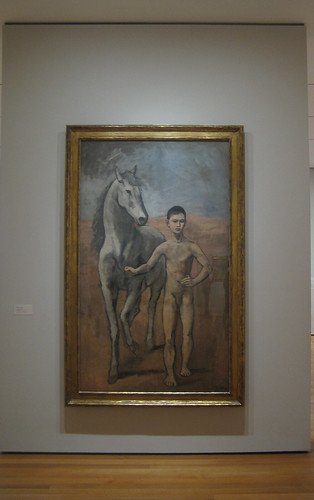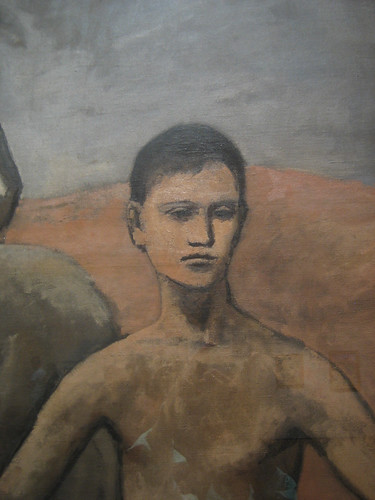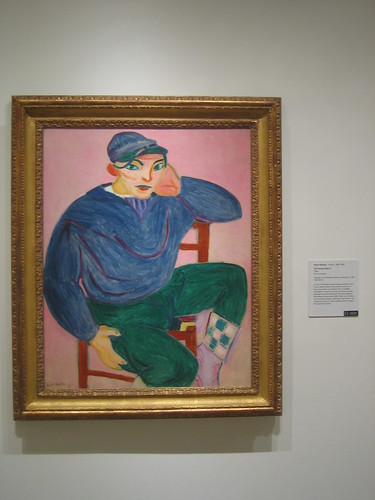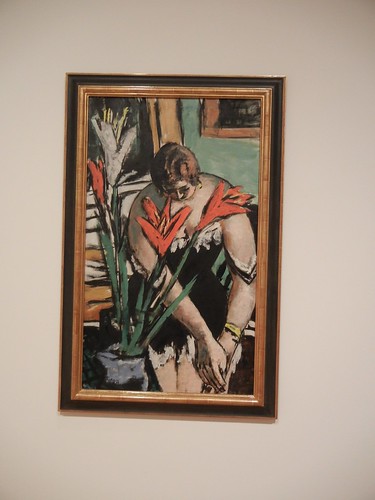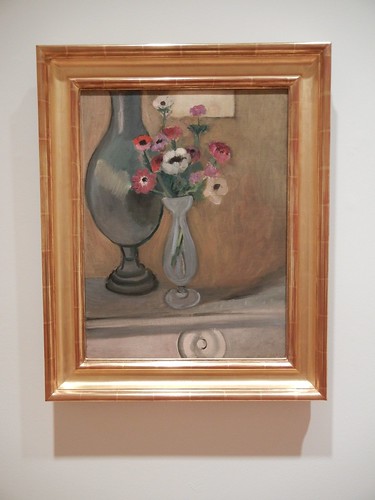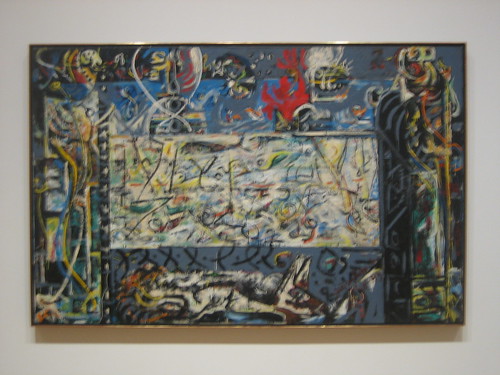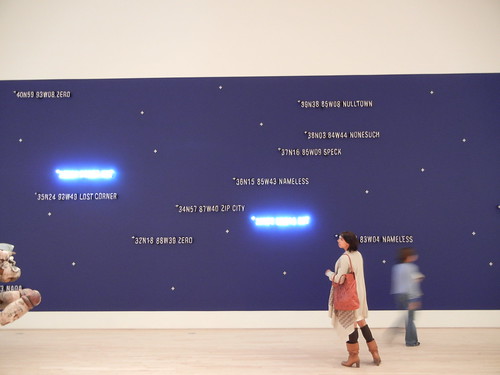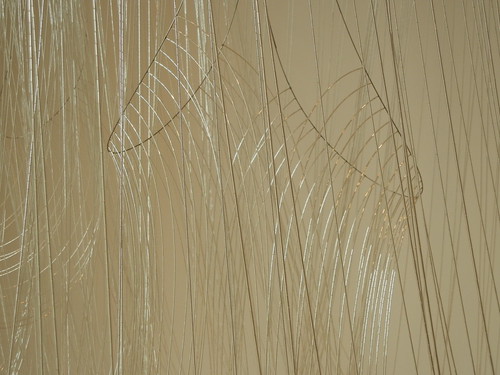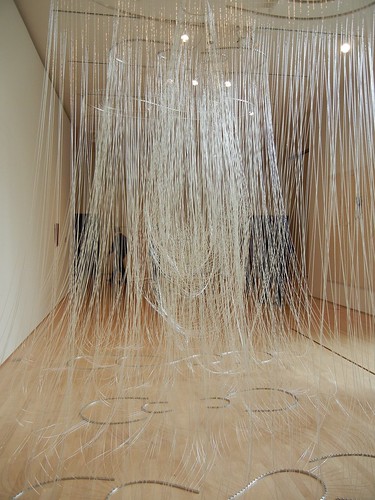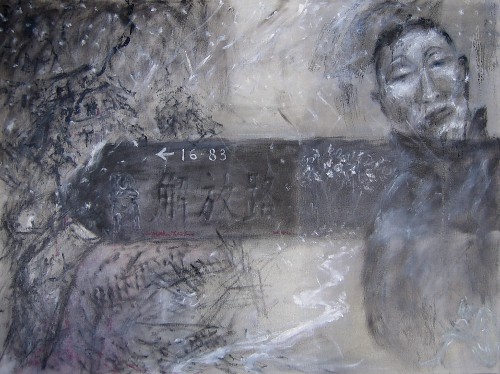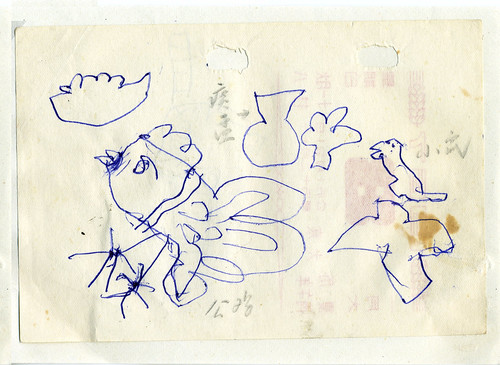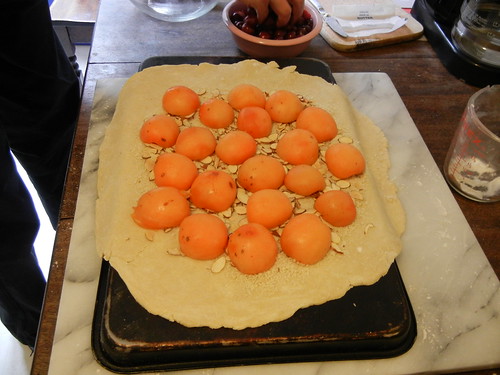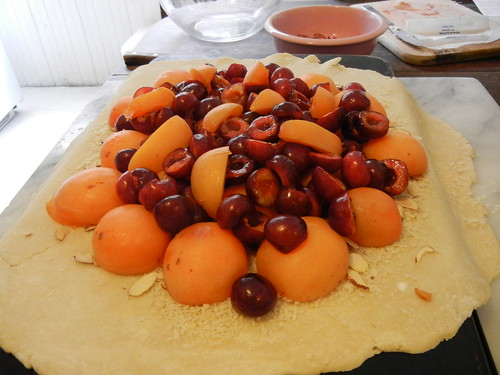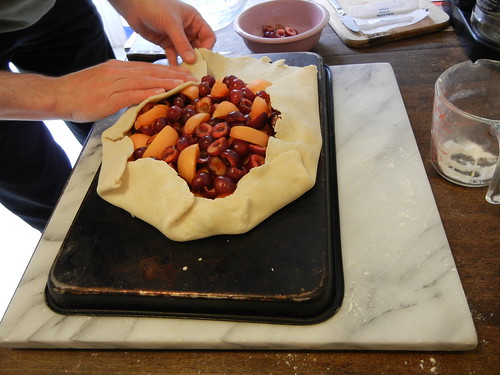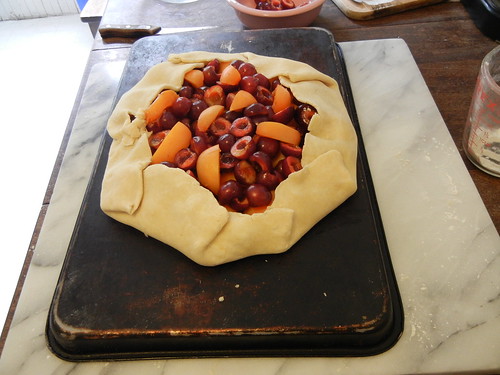Last weekend, I watched the Werner Herzog documentary "
Cave of Forgotten Dreams" and I was deeply impressed by the maturity of the 32,000 year old paintings in some caves in France and the impenetrability of that particular culture.

32,000 years is beyond our understanding and as
Steve Masover pointed out
but here's what made the hair on the back of my neck stand on end: at least one of the sets of animal paintings, Herzog narrates, is formed of an image applied to a blank wall of the cave, and another superimposed on it five thousand years later.
Yeah, I can blithely talk about "32,000 years ago" or "billions and billions of stars" or a "national debt of $14,000,000,000,000." But as I say them, those numbers feel empty of meaning. One loses hold of scale.
But five thousand years? That's a concrete number I can get my head around.
Why is that? Maybe because five thousand years is the entire span of recorded human history?
However, I have to say that these 32,000 year old paintings are recorded human history as well, just we have completely lost connection to them.
Despite the fact that these paintings reside in France, it would be a stretch to claim that they are part of the French culture we know of.
This trigger me to think deeper about the continuity and survival of cultures. Let's stay in France for a while. Can we say the current culture the same as those of Carolingian dynasty, of Louis XIV or of Napoleon era? Or the Gaul? Can a culture shocked and brutalized by traumatic events such as French Revolution claim its survival? Does the existence of a land and its continuous population ensure the continuity of the culture? Furthermore, how to ensure the survival of a culture, any culture, in a fast changing time?
Can we say the German culture is that of Schiller, Goethe or Wagner? Of Protestant and Catholic? What about the ancient history which traced back before their conversion to Christianity under Fire and Swords of Charlemagne?
In Greece, in Italy, the current cultures are different from their former, more exulted
polytheism cultures. Therefore, are the current cultures there still Greek or Roman culture?
Moving our focus to Asian. Centuries ago, Japan adopted many aspects from Chinese culture, yet it is distinctly different from either Chinese or more ancient Japanese culture. What would we call the current Japanese culture? Sino-Japanese or Japanese?
China also yields many thoughts and debates here.
In mainland China and Taiwan, people though still can understand, with training, ancient texts, but none speak and write that way anymore. China went through primitive communes, feudal society, imperial time and republics. The majority Han people were conquered multiple times, most significantly by the Mongols and the Manchu people, both severe blows to the continuity of the culture. Let's not forgot the First Emperor, in his drive to control people's thoughts, banned all schools of philosophy but Confucius. The cultures before and after that watershed moment can hardly be the same. The savagery of Culture Revolution and other political campaigns before and after have done away with many Chinese traditions. It was upon overseas Chinese to carry on those traditions, for better or for worse. Mainland China and Taiwan separated for more than sixty years and the differences between those two sides are as striking as they are similar. Which one is more authentic?
In China, there are many Muslims, many of them are the descendants of merchants came through the Silk Road. Are their culture part of Chinese culture, or their own? Theirs cannot be said the same as the prevailing cultures in Arabia, or other part of the Islamic world. What is the culture of theirs?
A small group of Jewish also settled in a small area of China, and maintained certain, corrupted form of Jewish rituals. Are they Jewish or Chinese?
If they are less authentic, was is because that they had left their ancient land? But many Jewish people are more orthodox without Israel than within. Does originating land guarantee the continuity and survival of culture?
This moved me to think of Tibetans. Today, Tibetans living outside Tibet can openly worship Dalai Lama while people inside cannot. If the political structure continues, the Tibetan tradition would rely on the outsider to carry on. Yet, the lifestyles without the Himalaya plateau would never be the same. Can we say for certain that Tibetan culture will survive? When Dalai Lama proposed to abolish the reincarnation of his institution, wouldn't that a break from the Tibetan culture of centuries already?
Cultures do usually shrive in its originating land. But not necessarily so. As mentioned above, many Chinese traditions are to be found in Singapore, USA, Taiwan, or Japan, rather than in China. Catholicism is more energetically embraced in Southern America than in Europe.
Without the land, culture can survive, if rather rarely. Jewish people, wandering about for millenniums, managed to carry on their traditions. It is not a stretch to say that if Israel cease to be a Jewish state, Jewish culture would not disappear along with it. This also points out the fallacy of insisting on the survival of Israel as a political entity to ensure the continuity and survival of Jewish culture.
I love to hear my Jewish friends' stories of their living and working in
Kibbutz many year ago. It seems that Israel at one time, poised to be the shining example of human brotherhood. Alas, the Israel today is no long that idealistic one. It is just as cynical and corrupt the hostile neighbors.
By trying to survival by all means, at all costs, Israel has collectively betrayed its history, its suffering and morphed tragically from oppressed to oppressor.
Should we do our utmost to ensure the continuation and survival of these, when they have lost their souls?
This reminded me the myth of Tithonus or Tithonos (Ancient Greek: Τιθωνός), the lover of Eos, Titan of the dawn. Wikipedia related the story thus:
"Eos kidnapped Ganymede and Tithonus, both from the royal house of Troy, to be her lovers. The mytheme of the goddess's mortal lover is an archaic one; when a role for Zeus was inserted, a bitter new twist appeared: According to the Homeric Hymn to Aphrodite, when Eos asked Zeus to make Tithonus immortal, she forgot to ask for eternal youth (218-38). Tithonus indeed lived forever
"but when loathsome old age pressed full upon him, and he could not move nor lift his limbs, this seemed to her in her heart the best counsel: she laid him in a room and put to the shining doors. There he babbles endlessly, and no more has strength at all, such as once he had in his supple limbs." (Homeric Hymn to Aphrodite)"
Without vitality, morality, what is left in a culture? I can only wonder.
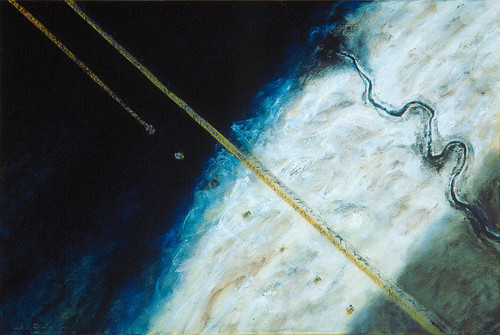 Bombed Bridge, III / 炸斷的橋樑之三 / Bombardierten Brücke, III
© Matthew Felix Sun
Bombed Bridge, III / 炸斷的橋樑之三 / Bombardierten Brücke, III
© Matthew Felix Sun

